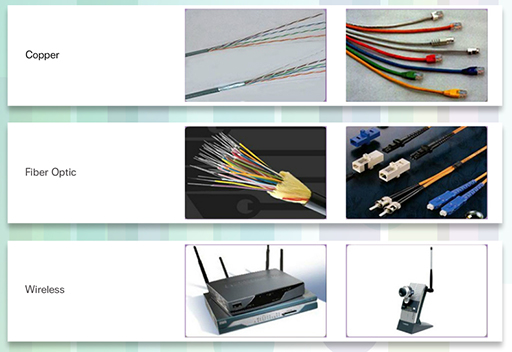1.3.5 Network media
Communication across a network is carried over a medium, such as through a cable or through the air. The medium facilitates communication from source to destination.Modern networks primarily use three types of media to interconnect devices and to provide the pathway over which data can be transmitted. As shown in the figure, these media are:
- metallic wires within cables
- glass or plastic fibres (fibre optic cable)
- wireless transmission.
The signal encoding that must occur for the message to be transmitted is different for each media type. On metallic wires, the data is encoded into electrical impulses that match specific patterns. Fiber optic transmissions rely on pulses of light, within either infrared or visible light ranges. In wireless transmission, patterns of electromagnetic waves depict the various bit values.
Different types of network media have different features and benefits. Not all network media have the same characteristics, nor are they appropriate for the same purposes. The criteria for choosing network media are:
- the distance the media can successfully carry a signal
- the environment in which the media is to be installed
- the amount of data and the speed at which it must be transmitted
- the cost of the media and installation.

